How to clear a clog in the bathroom

A sewage clog (the most common is a clog in the bathroom) is accompanied by the cessation of water drainage and, as a consequence, flooding.
Slow drainage of water through the holes indicates that a clog has occurred. It is necessary to quickly eliminate this trouble, as the use of such a bathtub is extremely unhygienic. Also, you should not wait for the clog to disappear over time by itself.
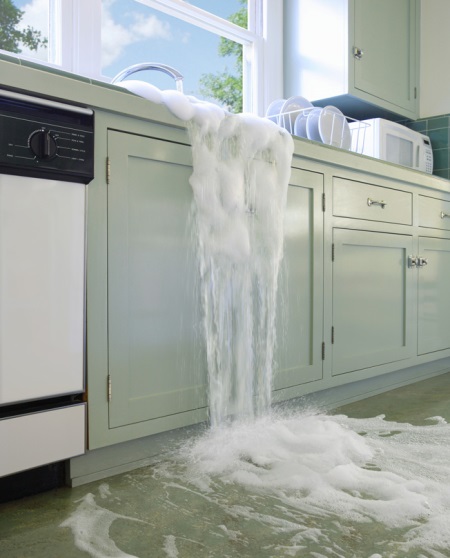
Not taking action to remove the clog and continue using the bathtub, you can only worsen the situation. Eliminating the problem in the future will be more difficult.
In principle, not only a specialist can cope with the clog, it can be eliminated by your own efforts. You should know that cleaning a clog in the bathroom is more difficult than removing a clog in the sink, because the bathroom has an additional hatch for water drainage.
Usually the formation of a clog is the result of improper use of the sewer system, although it is very difficult to keep track of everything that goes down the drain.
Causes of clogs
The most common sources of clogs are:
- lint from clothing,
- hair,
- Pet hair,
- Small debris.
These elements form a clog - a lump in the pipe, which does not allow water to flow easily through it.
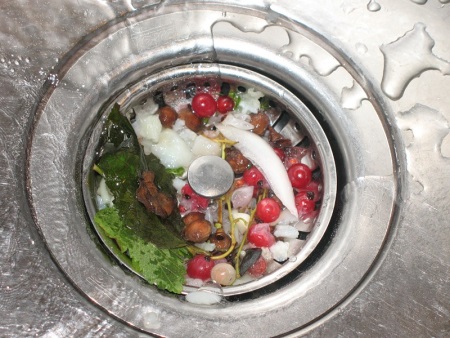
A plunger is the easiest way to clear a clog
The plunger is the simplest tool that can remove a clog. The plunger can be used not only for elimination of clogs, but also for prevention. It is proved that periodic use of a plunger guarantees less frequent clogging.
Sequence of actions at removal of a clog:
- You need to put the plunger so that the rubber base covers the hole of the drain.
- The tub should be filled with water beforehand, as a stream of water will help to push the debris through, in this case water will be more effective than air.
- Moving the handle up and down, do a couple of swings with the tool, so that the air can pass into the drain and push the lump much further. Next, you need to flush the debris out with water.
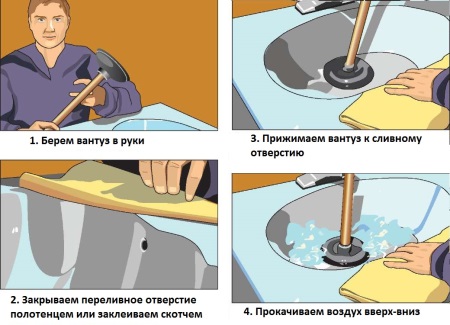
Since the bathtub has an extra hatch for water drainage, in case water overflows over the edge, air will seep into the opening. Then the plunger will be useless because it needs a vacuum to work. To simplify matters, you can cover the second drain hole with a second smaller plunger. A rag will not help in this case, as it is very air permeable.
Chemicals
The use of different chemicals is another way to remove clogs. This method has been used for quite a long time, and today there are improved compositions that are easy to buy. If you are picking up household chemicals for the bath, the best choice will be a product that has the ability to dissolve hair. For the kitchen, a product that should dissolve grease is the right choice.

Actions when removing clogs with household chemicals:
- You need to choose the right product, it does not matter if it is powdered or liquid.
- It is essential to read the instructions for use and determine whether the product is suitable for the pipes you have installed.
- According to the instructions on the package, pour or pour the product into the drain. When using the powder, it is necessary to pour boiling water over the drain.
- For the best effect of the product it is necessary to wait a given amount of time according to the instructions.
- Then you need to turn on hot water and thus rinse the pipes, removing debris.
Cleaning the siphon
It is usually necessary to clean the siphon before removing the clogs. This will also eliminate the unpleasant odor that occurs due to sediment on the walls of the siphon. Such cleaning is also suitable for preventive maintenance of the pipes.
If it is carried out once a month, you are not afraid of clogs.
Stages of cleaning the siphon:
- It is necessary to put under the siphon a material that absorbs moisture;
- On the material set the basin, which will not spill dirty water on the flooring;
- Then it is necessary to unscrew the lock nut and remove the bulb;
- The liquid, which creates a water trap, will flow out into the basin;
- The siphon must be washed, remove all the debris that managed to linger, remove the plaque present on the walls;
- assemble the construction, the bulb of the trap should not rest on the drain pipe, to preserve the odour trap;
- open the faucet and fill the odour trap with water - this is a test for tightness of all connections.

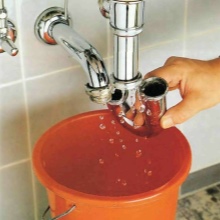
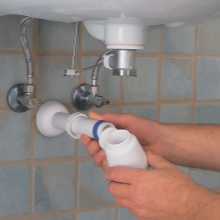
Rope for sewer cleaning
Also for the removal of clogs cables are used. Plumbing rope has the form of a tight twisted wire, which is coiled into a spiral. To ensure the twisting of the rope at the end of the device is a handle with a plastic or wooden nozzle. This tool is suitable for removing clogs in the bathroom, and more specifically in metal pipes.
The prescriptions for removing clogs with a rope:
- Install the end of the rope in the drain or in the outlet of the pipe;
- it is better not to perform this action alone, the first person twists the handle and the rope is twisted around the axis, and his assistant, directing the rope, pushing it forward;
- by twisting the rope you can easily overcome all the twists and turns of the pipe. Also during this action, the cable screws into the clog, thereby destroying it;
- After the clog has been removed, the tension is reduced, so you must make several back and forth movements with the cable;
- then the cable must be taken out and washed;
- If no positive result is observed, the procedure should be repeated from the beginning.
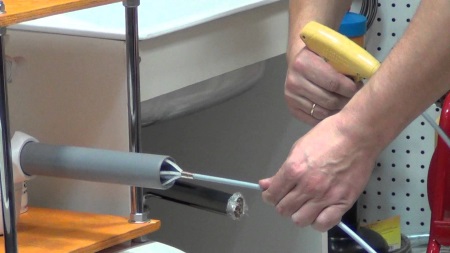
Before you begin, pay attention to the tension of the cable. If it is not taut, it can twist and become damaged.
Prevention
From all of the above, it can be concluded that the clog in the bathroom can be removed with your own hands. But it will be much more effective to carry out preventive measures against clogs. Implementation of simple preventive measures will prevent clogging, and the bathtub will remain clean and usable.
Tools for prevention
- Nets that are installed in the drain and prevent debris (hair, hair, dirt) from getting into it.
- Household remedies that are used to clean pipes.
- A plunger as a tool for prevention.
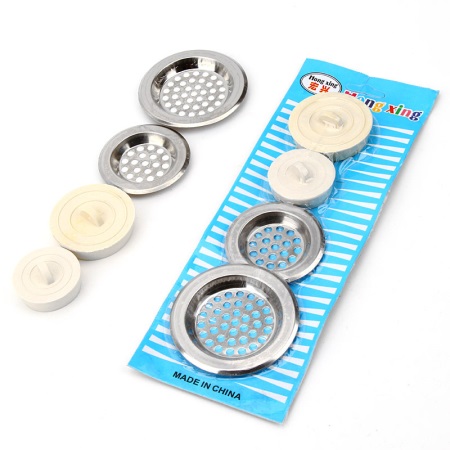
How to determine the cause
The causes of the appearance of a clog can be different. First, you need to make sure whether the trouble that arose in the bathroom is definitely a clog.
If the day before the problem, the departure of the water was normal, and after some activities, such as washing animals or washing a rug, the water stopped running away quickly, then you can be sure that it really is a clog.
If, however, the water flow was not fast before, you should call a specialist and have him first check the height of the drain. All responsibility for clogged pipes keeping the bathtub clean is the responsibility of the homeowner.
If you are not confident in your abilities, or your attempts to remove the clog were unsuccessful, you need to use the help of a specialist, so as not to exacerbate the problem. In addition, it is unlikely that you have all the necessary tools to remove the clog. Specialists will easily perform the required work to remove the clog, taking into account all the features of the pipes. Of course, calling a worker will incur additional costs, but it will provide quality cleaning of the pipes and encourage you to take better care of the pipes.
Consequences of blockages are not the most pleasant, it can be a breakdown of plumbing, flooding the neighbors, and even a breakthrough of internal pipes that can leave the whole house without water. Therefore, it is necessary to immediately and expertly remove clogs and preventive measures.





Often a clog occurs in the bathroom. Most of the time my wife's and daughter's hair is to blame. I need to take preventative measures already, I'm tired of cleaning everything out.